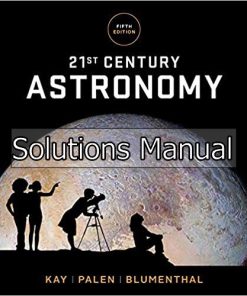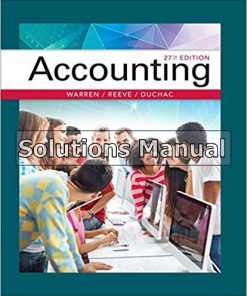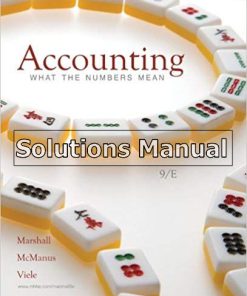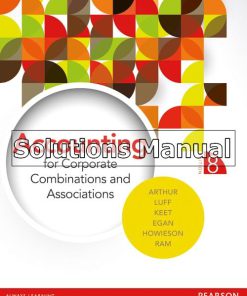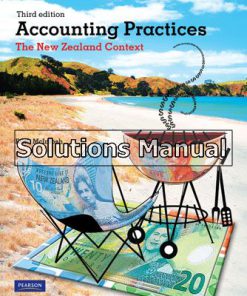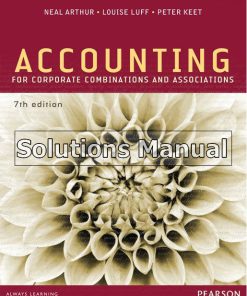Civil Engineering Materials 1st Edition Sivakugan Solutions Manual
$26.50$50.00 (-47%)
Civil Engineering Materials 1st Edition Sivakugan Solutions Manual.
You may also like
Civil Engineering Materials 1st Edition Sivakugan Solutions Manual

Product details:
- ISBN-10 : 1305386647
- ISBN-13 : 978-1305386648
- Author: Nagaratnam Sivakugan (Author), Carthigesu T. Gnanendran (Author), Rabin Tuladhar (Author), M. Bobby Kannan (Author)
CIVIL ENGINEERING MATERIALS prepares you for today engineering challenges, providing a broad overview of the materials you will use in your studies and career. You are not only introduced to traditional materials, such as concrete, steel, timber, and soils, but you also explore important non-traditional materials, such as synthetics and industrial-by products. The authors use a wealth of practical examples and straight-forward explanations to ensure you gain a full understanding of the characteristics and behavior of various materials, how they interact, and how to best utilize and combine traditional and non-traditional materials. While emphasizing the effective use of civil engineering materials, the authors carefully consider sustainability to give you a broader context of how materials are current used in contemporary applications.
Table contents:
1. ENGINEERING BEHAVIOR OF MATERIALS — SOME FUNDAMENTALS. Introduction. Stress-strain relations and constitutive models. Types of loadings. Special loading situations. Strain-displacement relations. Equation of Equilibrium. Laboratory measurements and measuring devices. Material variability and sample statistics. Numerical modeling. Standards, units, and safety. Sustainability. Summary. Exercises.
2. CHEMISTRY OF MATERIALS. Introduction. Atomic structure and bonding. Arrangement of atoms. Classification of materials. Imperfections in materials. Strengthening in materials. Characterization of materials. Summary. Exercises. References.
3. SOILS. Introduction. Civil engineering applications. Formation of soils. Soils versus other engineering materials. Soil classification. Compaction and earthworks. Permeability. Strength and stiffness. Measurement of soil properties. New materials. Summary. Exercises. References.
4. ROCKS. Introduction. Rock engineering applications. Common rocks in construction. Rock mass and intact rock. Strength and stiffness of intact rocks. Laboratory tests for intact rocks. Field tests for rocks. Rock mass classification. Rockfills. Summary. Exercises. References.
5. AGGREGATES. Introduction. Origin, geology, and classification of parent rocks. Properties and testing of aggregates. Uses of aggregates. Lightweight and heavyweight aggregates. Aggregates from industrial by-products and waste. Handling, transportation, and storage of aggregates. Summary. Exercises. References.
6. GEOSYNTHETICS. Introduction. Types of geosynthetics, polymers used, manufacture, and common use. Properties and testing of geosynthetics. Functions, mechanisms, and engineering applications. Selection of geosynthetics. Summary. Exercises. References.
7. ASPHALT CEMENT AND HOT MIX ASPHALT CONCRETE. Introduction. Types of asphalt cement or bituminous materials. Common asphalt cement products and their grading. Typical uses of asphaltic materials. Properties and testing of asphalt cement. Overview of pavements. Bituminous surfacing treatments and sealing in pavements. Asphalt concrete. Use of additives and recycling. Summary. Exercises. References.
8. CEMENT AND CONCRETE. Introduction. Constituents of concrete. Different stages of concrete. Properties of fresh concrete. Site practice of concrete. Properties of hardened concrete. Concrete mix design. Summary. Exercises. References.
9. METALS AND ALLOYS. Introduction. Ferrous alloys. Nonferrous metals and alloys. Types of failures. Summary. Exercises. References.
10. STEEL. Introduction. Advantages of steel. Limitations of steel. Iron- and steel-making. Wrought iron. Cast iron. Carbon steel. Structural steel. Heat treatment of steel. Mechanical properties of steel. Summary. Exercises. References.
11. POLYMERS, CERAMICS, AND COMPOSITES. Introduction. Polymers. Ceramics. Composites. Summary. Exercises, References.
12. WOOD. Introduction. Advantages of lumber. Limitations of wood. Structure of wood. Types of wood. Chemical composition of wood. Anisotropic behavior of wood. Conversion and processing of wood. Seasoning of wood. Defects in wood. Degradation of wood and preservative treatment. Physical properties of wood. Mechanical properties of lumber. Engineered lumber products. Summary. Exercises. References.
13. SUSTAINABLE USE OF CONSTRUCTION MATERIALS. Introduction. Sustainable development. Sustainability of construction materials. Summary. Exercises. References. APPENDIX A UNIT CONVERSIONS INDEX
People also search:
civil engineering materials
construction materials engineering council
latest innovations in civil engineering materials







